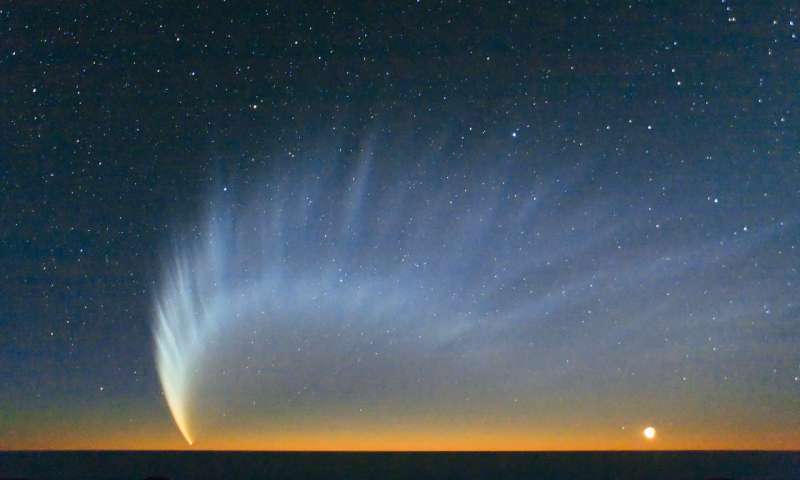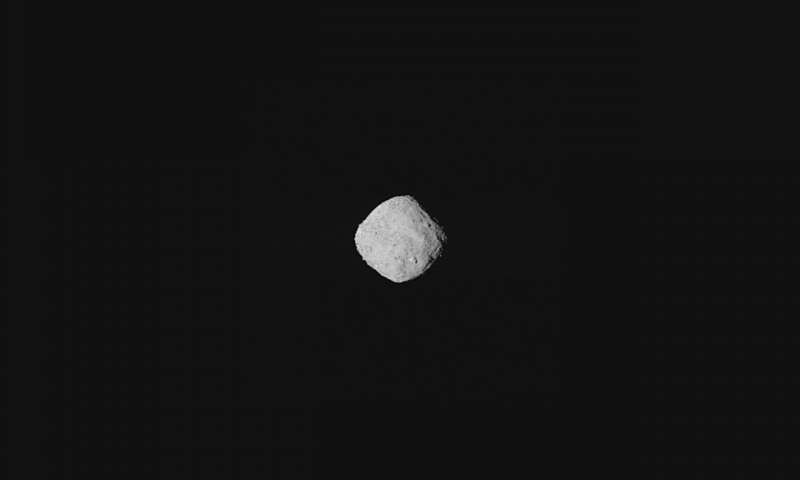At https://phys.org/print460383012.html … data from NASAs STEREO spacecraft (short for Solar and Terrestrial Relations Observatory) has been reassessed. The subject in question goes back to 2007 – the appearance of Comet McNaught in the skies (mainly of the southern hemishere). This was one of the brightest comets of the last 50 years and it was visible by naked eye even during daylight. The STEREO instruments captured images of the dust tail in a fan like formation that stretched over 100 million miles from the comet nucleus. How exactly the tail broke up the scientists did not know at the time. It recalled another report of a comet back in 1744 – the Great Comet. It was said to have dramatically fanned out into six tails, a phenomenon unknown at the time (to scientists) and unexplained …
 … Some years late, Oliver Price, a science PhD student at UCL London, developed a new image processing technique to have a closer look at the data from both STEREO and SOHO in order to see what had been going on. He found an unexplained solar effect on comet dust. Not only did the solar wind affect the ion tail, or coma, but also had major effects on the dust tail. Dust particles are emitted from the nucleus and collapse into long striations – but it was the current sheet around the comet that had the most effect. It jolts the dust away every time it encounters the magnetic outliers in the current sheet – ruffling the direction and creating the fan like features of Comet McNaught. Hence, the dust is electrically charged and the solar wind is affecting the nature of the dust.
… Some years late, Oliver Price, a science PhD student at UCL London, developed a new image processing technique to have a closer look at the data from both STEREO and SOHO in order to see what had been going on. He found an unexplained solar effect on comet dust. Not only did the solar wind affect the ion tail, or coma, but also had major effects on the dust tail. Dust particles are emitted from the nucleus and collapse into long striations – but it was the current sheet around the comet that had the most effect. It jolts the dust away every time it encounters the magnetic outliers in the current sheet – ruffling the direction and creating the fan like features of Comet McNaught. Hence, the dust is electrically charged and the solar wind is affecting the nature of the dust.
At https://phys.org/print460360708.html … asteroid Bennu as posted by NASAs Osiris-REx spacecraft. This is the mission target – still a long way off.

At https://phys.org/print460376390.html … the Mikulski Archive for space telescopes makes all Kepler data publicly available. The Kepler spacecraft's mission was to find exo planets – which it succeded in doing to a remarkable degree. It has also observed supernovas, star clusters such as the Pleiades, and various other space objects. The Kepler mission has now been superceded by the TESS mission (Transmitting Exoplanet Survey Satellite). See also mast.stsci.edu/portal/Mashup/Contents/Mast.portal.html
